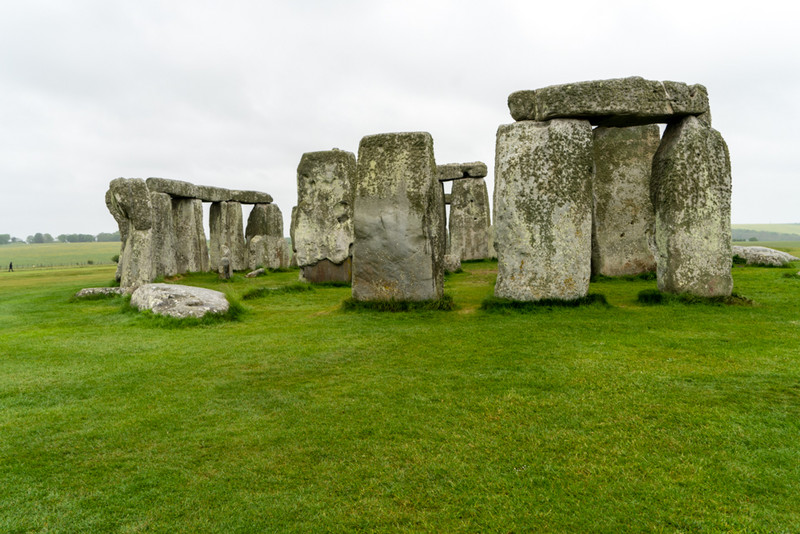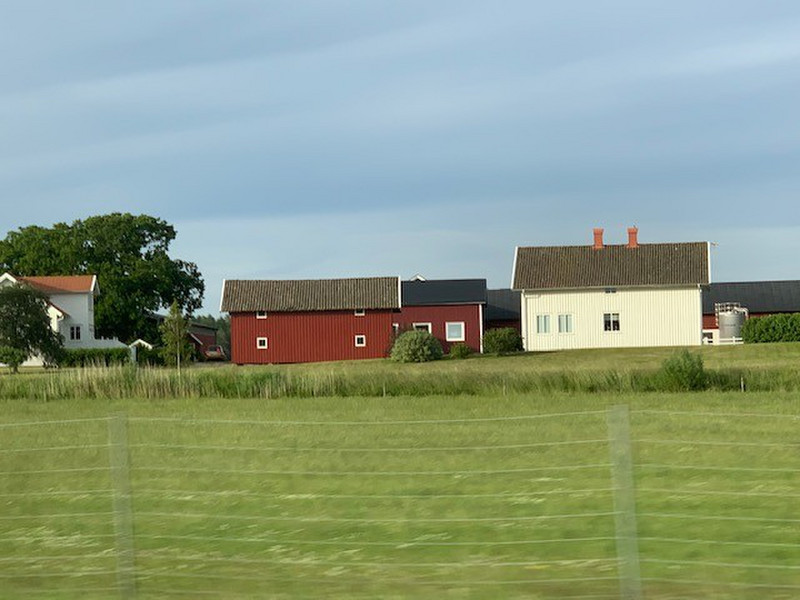Upon arising and looking outside it became apparent that today was likely to be somewhat different from a weather standpoint. Our fears were well founded. By the time we got to the parking lot for the visitor center and to catch the shuttle bus to Stonehenge it was spitting rain. The air was noticeably cooler, and with the blowing wind and rain it had the sort of raw day that you want to avoid as much as possible. Having previously had an extensive visit to Stonehenge, I would have skipped it entirely on a day like this. But Jm had never seen it, and since it is one of the iconic travelers destinations in the world, we all felt we should go. By the time we stepped off the 5 minute shuttle ride, the wind had picked up even more and it was raining more heavily. Jennie and Robbie beat a quick retreat. I went down to the henge and snapped a couple of pics then headed back to catch the next shuttle. Jim went down long enough for a quick selfie then headed back as well.
themselves remain fixed. You no longer can drive up to the site. There is now a very nice visitors center that tells the story of Stonehenge and the surrounding prehistoric sites. What is easy to forget about this amazing structure is its immense age. There is archaeological evidence of a ceremonial ring structure gong back to about 6000 BCE, and the stone structures we see today date from about 3100 BCE. They preceded the great pyramids of Egypt by years, the Roman Empire by about 3000 years, and present day civilization by about 5000 years. Over hundreds or thousands of years, the size, layout, and use of this area changed, but it appears to have been used for burials throughout its history. In its earliest form, it apparently was a simple henge (an earthen wall with an interior ditch) with a diameter of about 110m. The large stones were added later, and formed a double ring structure with about a 33m diameter. The alignment of certain of the stones to the path of the sun, lining up on the summer solstice sunrise and the winter solstice sunset, is well known now, but came about with changes made several
hundred years after the site was first occupied as a ceremonial site. As we shall say in our next journey to France and Spain in September, people all over Europe erected these stone courses, and expended enormous effort to do so. Clearly this indicates that the significance of the constructions was immense.
From Stonehenge, we set course for Lyme Regis and the Jurassic Coast World Heritage Site. But on the way, a certain salacious curiosity took us by the little village of Cerne Abbas. There, on a hillside above the nearby Abbey, is a geoglyphic figure of a man holding a club in his right hand, and sporting a giant erect phallus (36 feet long). The first historic mention of the figure is in the 17th century, but scientific dating suggests that it goes back to CE. There are all sorts of theories about its meaning, but best evidence is that it was altered several hundred years after its initial creation, and the phallus even later, perhaps to mock the Puritanism of Oliver Cromwell. Along with the Wilmington Giant, it is one of two such giant human figures on English hillsides. There are others depicting animals. These are
all reminiscent of the famous Nazca lines in Peru and numerous structures in the American Southwest. Unfortunately, it was still raining and raw, so I got out and took one poor quality photo and off we rolled.
The initial starting point for planning this trip was the Jurassic Coast. I have always been fascinated by fossils, and after reading about the Jurassic Coast I determined that I would like to visit, and perhaps find something interesting myself. I guess I had some romantic notion of stepping onto a field of ammonites, or seeing an ichthyosaur jawbone protruding from a cliff face. Neither happened, but I should have known better.









